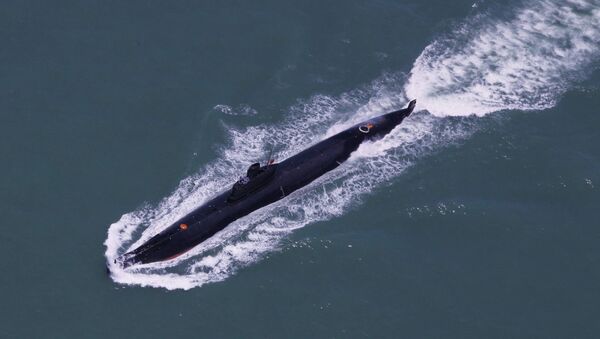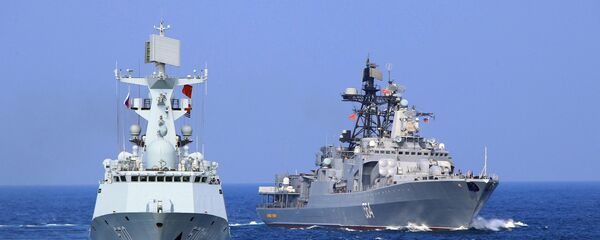The South China Post reported Sunday that Beijing expects to deploy artificially intelligent unmanned submarines in the early 2020s. The seacraft could be used to survey waters, place munitions or even be used in suicide attacks against enemies, scientists involved in the program told the outlet. Lin Yang, marine technology equipment director at the Shenyang Institute of Automation, Chinese Academy of Sciences, confirmed the program, and said it was a response to work in the US to develop similar watercraft.
These subs, dubbed extra-large unmanned underwater vehicles, or XLUUVs, are much bigger than the current crop of underwater vehicles — large enough to dock as conventional submarines and to carry significant weaponry and other equipment. Their artificial intelligence will help them operate undersea, not only to avoid natural phenomena, but to detect and identify friendly or hostile ships and make navigational decisions to avoid them. The XLUUVs are also designed to complete tasks without needing to seek input during the course of a mission, the SCMP reports. The intention is for the subs to depart, complete their missions and return without needing guidance.
One of the main advantages of the AI subs, however, is their relatively low cost, as all of the investment that goes into making the vehicles survivable environments for humans can be stripped away. Without those frills, the ships can operate fearlessly, using artificial intelligence systems to learn from what is happening around them without having to be concerned with protecting human cargo. They could be a major issue for enemy commanders to deal with, Luo Yuesheng, professor at the College of Automation in Harbin Engineering University, where Chinese subs are developed, told SCMP.
Of course, without humans on board, the unmanned subs will have to be especially resilient, as human diagnostics and repairs while at sea won't be possible.
China has been increasingly investing in its navy, opening its first overseas naval base in 2017 and ramping up production of its growing fleet of aircraft carriers. Beijing announced earlier this year that it would be increasing its military budget by nearly 10 percent, the biggest jump in a recent upward trend that has seen military spending grow from $132 billion to $175 billion. (The US defense budget for 2018, by contrast, was just shy of $700 billion.)
The subs will join China's underwater drones, like the 11-foot, 1.5 ton Qialong III that scouts for deep-sea fossil fuel deposits as well as potential foreign ships, and other autonomous systems on land and in the air to act in concert with People's Liberation Army-Navy personnel. They are not intended to replace manned underwater vehicles, but to provide more options for human commanders, researchers on the program told the outlet.
Xu Guangyu, a retired general and senior consultant with the China Arms Control and Disarmament Association in Beijing, told Sputnik in February that while China intends to keep up with the US in terms of expertise and technology, that doesn't mean China is looking to achieve parity with the US' massive war machine.
"China would focus on competing against the United States on quality. We cannot fall behind in terms of technology. But in terms of the size or numbers service members of the military, we would not try to ‘strike a balance' with them. For example, they [the United States] have thousands of nuclear warheads. We would not be so foolish as to spend a lot of money on such weapons that lie dormant in storage facilities. If the accuracy and power of our missiles are strong, it's enough for us, because one of our missiles would equal 10 missiles from the United States," Xu said.
Tensions between the US and China are already high when it comes to the world's oceans. The US objects to China's continued building in contested zones of the South China Sea, and China has expressed strong opposition to the proximity of US vessels to the self-ruling island of Taiwan, which it considers a province of the mainland.






